
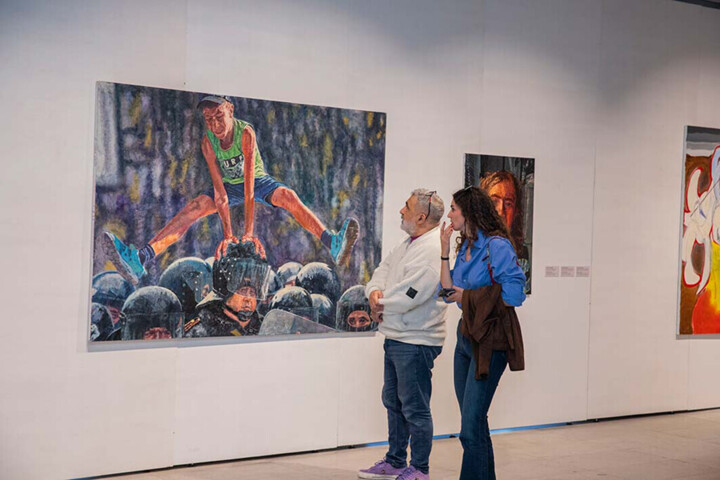
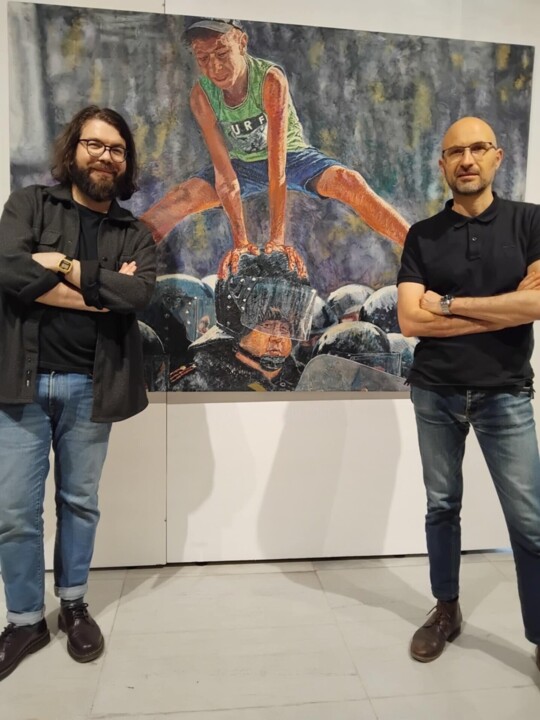
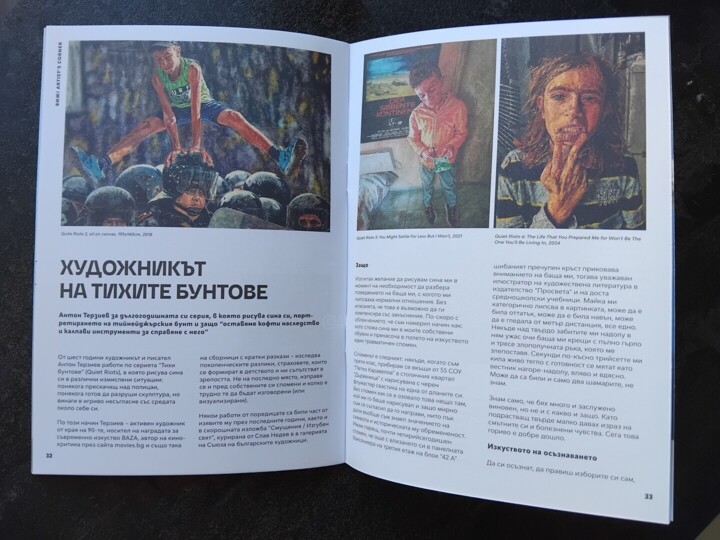
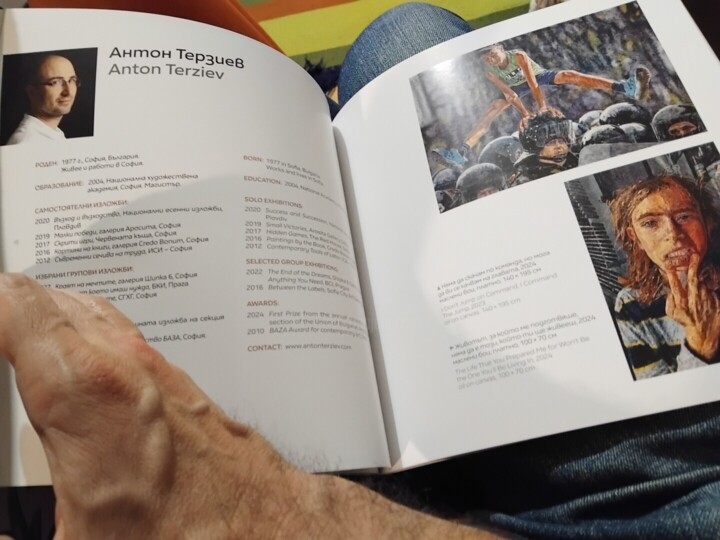

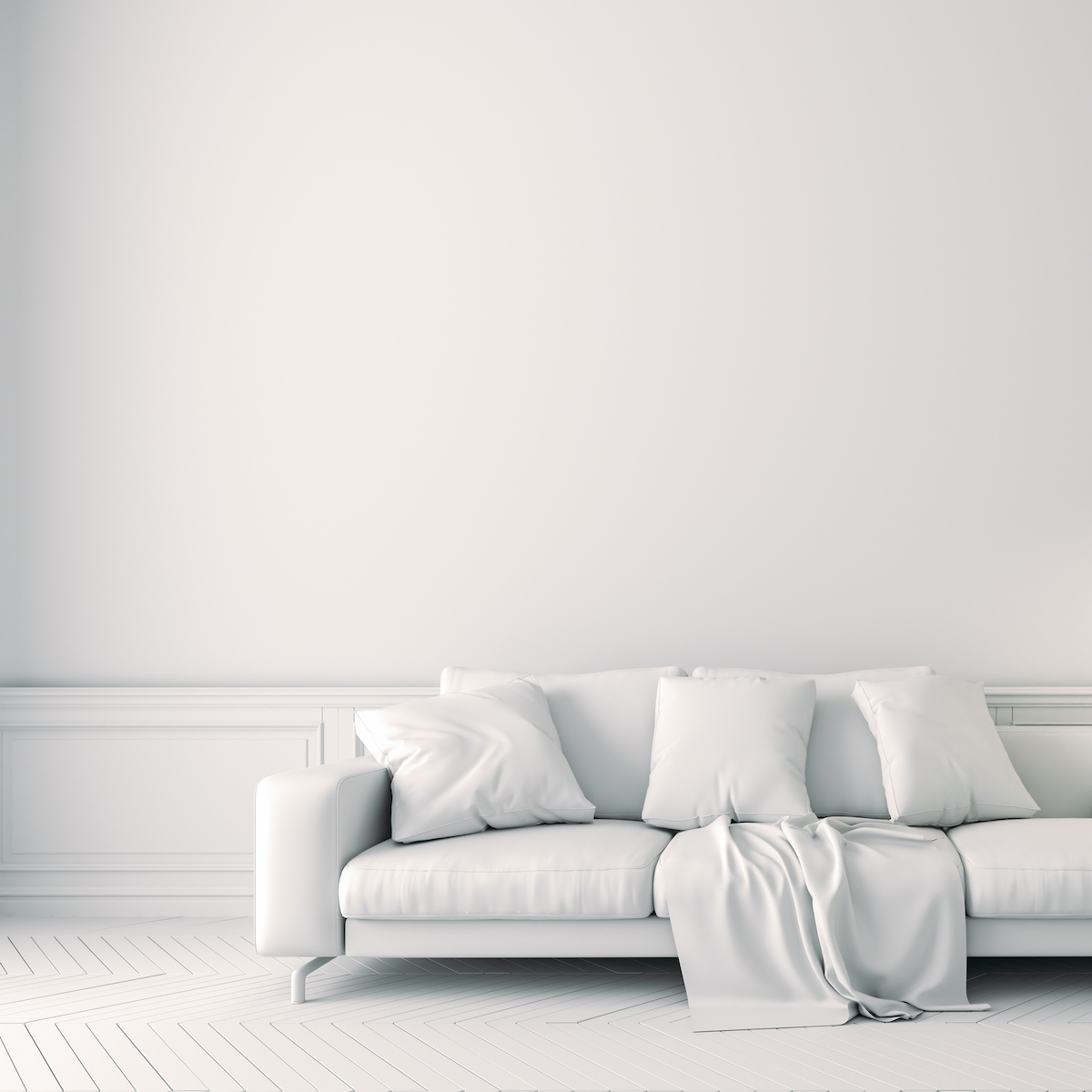
Laat het ons weten als je meer foto's van dit kunstwerk wilt zien!
- Achterkant van het werk / Kant van het werk
- Details / Handtekening / Het oppervlak of de textuur van het kunstwerk
- Kunstwerk in situatie, Ander...
I Don't Jump On Command, I Command The Jump (2025) Schilderij door Anton Terziev
Meer info
- Verpakking (Doos of kartonnen verpakking) Alle kunstwerken worden verzonden met een premium carrier, zorgvuldig beschermd en verzekerd.
- Tracking Opvolging van de levering tot aan de bezorging bij de koper. Er wordt een tracking nummer verstrekt zodat u het pakket in real-time kunt volgen.
- Vertraging Wereldwijde levering in 3 tot 7 dagen (Schatting)
- Douane niet inbegrepen De prijs is exclusief douanekosten. De meeste landen hebben geen invoerbelasting voor originele kunstwerken, maar het kan zijn dat u de verlaagde btw moet betalen. Douanekosten (indien van toepassing) worden bij aankomst berekend door het douanekantoor en worden apart in rekening gebracht door de vervoerder.
Meer info
- Volgbaar online certificaat van echtheid Echtheidscertificaten kunnen op elk moment online worden geverifieerd door de code van het kunstwerk te scannen.
- Certificering van de Kunstenaarswaarde De experts bestuderen het werk en de carrière van een kunstenaar om een onafhankelijke en vetrouwbare gemiddelde waarde vast te stellen. De gemiddelde waarde stelt de kunstenaar in staat zich voor een bepaalde periode in een prijsklasse te plaatsen. Ook kan aan de deskundige gevraagd worden om een precieze schatting te geven voor een specifiek werk.
Meer info
100% veilig betalen met SSL-certificaat + 3D Secure.
Meer info
Koop een licentie om deze afbeelding te gebruiken voor uw website, uw communicatie of om afgeleide producten te verkopen.
Usage: Weblicentie
| 1500 px | ||
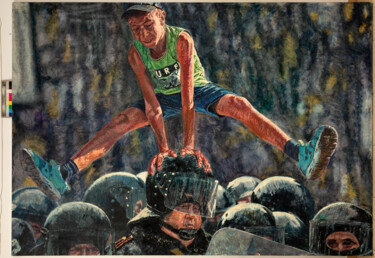
|
1030 px |
| Afmetingen van het bestand (px) | 1500x1030 |
| Gebruik wereldwijd | Ja |
| Gebruik op multi-support | Ja |
| Gebruik op elk type media | Ja |
| Recht van doorverkoop | Nee |
| Maximaal aantal prints | 0 (Zero) |
| Producten bestemd voor verkoop | Nee |
Direct na aankoop downloaden
Deze afbeelding is beschikbaar als download met licentie: je kunt ze op elk moment downloaden.
Beperkingen
Alle afbeeldingen op ArtMajeur zijn originele kunstwerken gemaakt door artiesten, alle rechten zijn strikt voorbehouden. Het verkrijgen van een vergunning geeft het recht om de afbeelding te gebruiken of te exploiteren onder de voorwaarden van de licentie. Het is mogelijk om kleine wijzigingen aan te brengen, zoals reframing, of de afbeelding opnieuw oriënteren, zodat het perfect past bij een project. Het is echter verboden om wijzigingen aan te brengen die het oorspronkelijke werk zouden kunnen schaden in zijn integriteit (aanpassen van vormen, vervormen, snijden, veranderen van kleuren, toevoegen van elementen enz. ...), tenzij een voorafgaande toestemming van de kunstenaar is verkregen.
Aangepaste licenties
Als uw gebruik niet onder onze standaard licenties valt, neem dan contact met ons op voor een aangepaste licentie.
Kunstafbeelding database-
Origineel Kunstwerk (One Of A Kind)
Schilderij,
Olie
op Canvas
- Dimensies Hoogte 57,1in, Breedte 76,8in
- Framing Dit kunstwerk is niet ingelijst
- Categorieën Schilderijen onder US$ 20.000 Figuratieve Politiek
The painting’s focal point is a youthful figure leaping over a heavily armored officer. The choice to place this figure mid-action—hands pressing atop the helmet—lends the painting a kinetic energy. Terziev halts a fleeting instant, reminiscent of photojournalistic “freeze-frames,” yet renders it in a painterly style. This tension between photo-like immediacy and the expressiveness of oil paint gives the scene both documentary clarity and a certain timelessness.
The tight framing around the main subjects emphasizes the confrontation. In the background, a phalanx of similarly clad officers recedes into an indistinct crowd, hinting at a broader social or political apparatus. The dynamic pose of the young figure—legs extended, arms bearing weight—cuts diagonally across the canvas, drawing the viewer’s eye from the figure’s face to the helmet below. This diagonal thrust is a compositional technique often employed to heighten drama, recalling, for instance, the angled bodies in Eugène Delacroix’s “Liberty Leading the People.” Terziev appears to favor a saturated palette: the vivid greens of the protester’s shirt and the deep blacks of the riot gear contrast sharply. The background’s muddled, smoky hues evoke tension and turmoil. Despite this gloom, the central figure seems illuminated—whether literally or symbolically—standing out against the massed uniforms. This painterly contrast underscores a classic artistic trope: the individual’s bright presence opposing a darker, more uniform collective force.
At first glance, the painting comments on the power dynamic between state authority (the officer in riot gear) and the individual (the agile figure vaulting over him). The act of physically leaping above the officer’s head becomes a metaphor for transcending imposed limits or commands. It suggests a reversal of typical power structures: the officer, usually the figure of control, is relegated to a support—albeit involuntarily.
The subject’s youthful appearance adds another layer of resonance. Depicting a young individual in direct, physical interaction with law enforcement draws upon an established tradition of protest imagery, where youth movements have historically galvanized political change. This generational tension recalls iconic photographs from the 20th and 21st centuries, in which young protesters often become the faces of revolution or societal critique.
The painting also alludes to the idea of the human body as a site of protest. The choice to vault, rather than to push or to attack, speaks to a form of resistance that is acrobatic, creative, and emblematic of personal freedom. It contrasts with the rigid, disciplined body language of the officers. In this sense, the work resonates with a lineage of politically charged performance art and photography, wherein gestures of dance or athleticism become statements of defiance.
While Terziev’s style is distinct from the Romantic or Baroque, the thematic of state power versus individual vulnerability recalls Francisco Goya’s **“The Third of May 1808.”** There, too, we see a focus on the human cost of political strife. Goya’s unflinching look at violence resonates in Terziev’s more contemporary depiction of confrontation, even if the latter is less about overt bloodshed and more about tension and symbolic subversion.
More directly, the painting aligns with 20th- and 21st-century traditions of politically engaged art—think of works by artists such as Banksy or Ai Weiwei, who fuse bold imagery with pointed social critique. Terziev’s piece, however, remains firmly in the realm of painting, bringing to mind large-scale compositions that historically served as calls to action or documentation of collective struggle.
Although the painting captures a realistic moment, the brushwork seems deliberately visible—especially in the musculature of the figure and the textured rendering of the riot gear. This blend of realism and expressionistic brush handling imparts an emotive quality. The painting avoids the polished sheen of hyperrealism, instead embracing a slightly raw surface that mirrors the rawness of civil strife.
As a large-scale work, the painting presumably envelops the viewer, magnifying the tension between protester and authority. Large canvases historically lend a monumental aura to their subject matter—an effect that can transform a single leap into a sweeping allegory of societal power struggles.
I Don’t Jump On Command, I Command the Jump” stands as a compelling example of contemporary political painting. Through a vividly captured, acrobatic gesture of defiance, Anton Terziev provokes reflection on youth, power, and the state’s response to public dissent. The painting’s dynamic composition, saturated color contrasts, and expressive brushwork imbue it with a timeless urgency. In art historical terms, it joins a lineage of works that memorialize moments of societal upheaval—echoing both the immediacy of photojournalism and the grandeur of historical painting.
By framing the tension between the individual and the forces of authority in a single, frozen leap, Terziev not only documents a poignant political instant but also suggests the broader, universal spirit of protest that transcends geographic and temporal boundaries. The painting thus resonates as a contemporary emblem of resilience—both a snapshot of a specific socio-political climate and a more enduring symbol of the human impulse to rise above constraints.
Verwante thema's
Anton Terziev, een hedendaagse Bulgaarse kunstenaar, is een meester in het gebruik van scherpe ironie als artistiek instrument om verschillende hedendaagse onderwerpen aan te pakken. Zijn werken worden gekenmerkt door een diepgaand gebruik van iconografie die een grimmige en kritische beeldtaal overbrengt. In zijn artistieke repertoire weeft Anton vakkundig elementen van inzet, vaardigheden en verhalen samen, wat resulteert in figuratieve hedendaagse kunst met een fijn vleugje sociaal commentaar, humor en boodschappen over de toestand van de kunstenaar.
Anton Terziev haalt inspiratie uit twee verschillende bronnen. Ten eerste komt zijn kunst vaak voort uit gebeurtenissen uit het echte leven en ontvouwt hij zich om hem heen op een manier die zijn creatieve proces stimuleert. Ten tweede speelt zijn verbeeldingskracht een centrale rol in zijn werk, waardoor hij levendige en tot nadenken stemmende beelden kan maken. Elk van zijn creaties is gegarneerd met subtiele elementen uit de popcultuur, afkomstig uit films en boeken. In elk stuk is een verhaal ingebed, een doeltekst die de ervaring van de kijker verrijkt zonder hem te overweldigen. Anton gelooft namelijk dat goede kunst zacht maar effectief communiceert.
Wat Antons werk onderscheidt, is zijn niet aflatende inzet om zijn publiek een gevoel van open verwondering achter te laten. Zijn stukken nodigen kijkers uit om een dialoog aan te gaan met de kunst en moedigen hen aan om de verhalen die hij presenteert te interpreteren, te bevragen en te verkennen. Het kiezen van de perfecte titel voor zijn werken is een uitdaging die hij vaak aangaat door inspiratie te putten uit literatuur, film of muziek.
De carrière van Anton Terziev als schilder is nauw verweven met zijn identiteit als schrijver. Zijn ideeën krijgen vorm in de vorm van schilderijen en kunstvoorwerpen, die zijn uiteenlopende talenten weerspiegelen. Naast schilderen brengt hij zijn artistieke visie tot leven door middel van optredens, filmmaken en design, waarmee hij een veelzijdige benadering van creatieve expressie demonstreert.
-
Nationaliteit:
BULGARIJE

- Geboortedatum : 1977
- Artistieke domeinen: Werken van professionele kunstenaars,
- Groepen: Professionele artiest Hedendaagse Bulgaarse Kunstenaars















